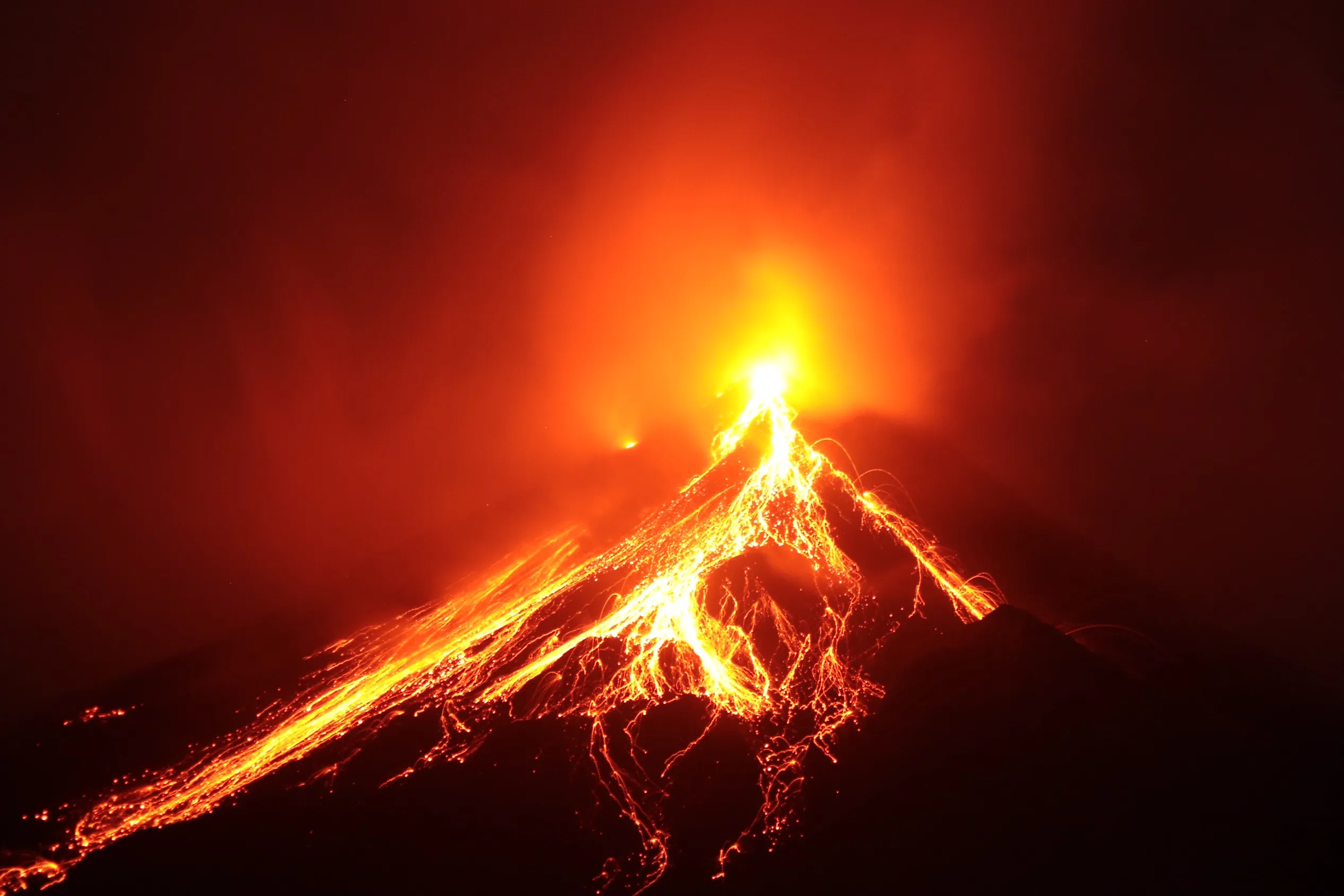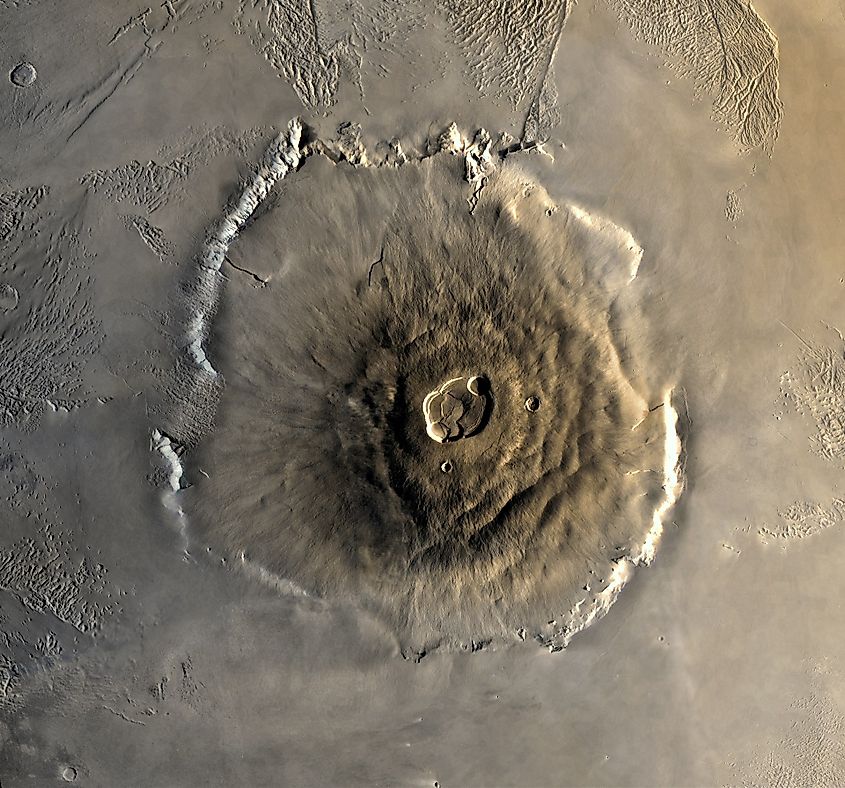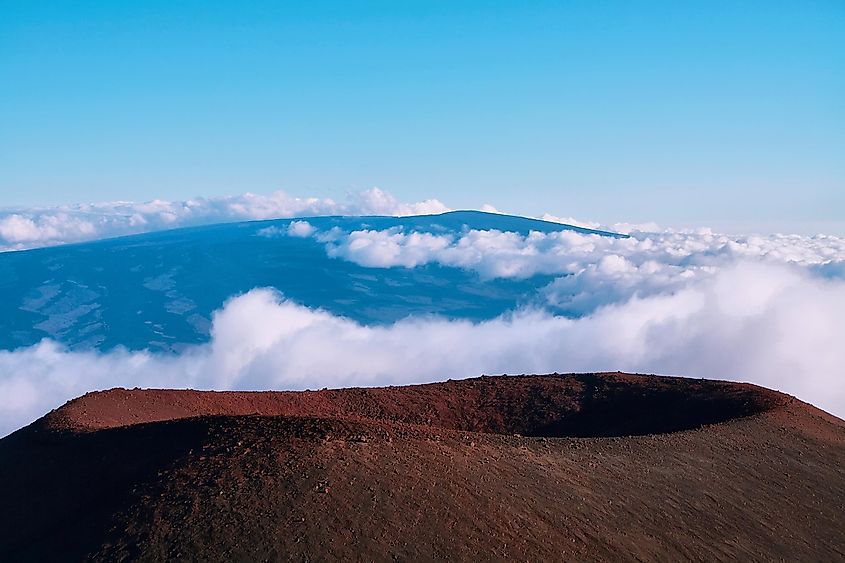
The Different Types Of Volcanoes
Volcanic eruptions are among the most destructive events in nature. Although volcanoes are generally thought of as mountains, there are actually six major types of volcanoes, which are classified based on their size, shape, and origin. Furthermore, these six different types of volcanoes can be placed into two general categories: central vent volcanoes and large-scale volcanic terrain.
Central Vent Volcanoes

Central vent volcanoes are the ones that most of us are likely familiar with. Overall, there are three types of volcanoes that are classified as central vent volcanoes: shield volcano, stratovolcano, and rhyolite caldera complex. As the name suggests, each volcano classified as a central vent volcano contains a central vent, which comes in the form of a crater near the volcano's summit. Both shield and stratovolcanoes are likely the most recognizable to the general person as they are the volcanoes that look like mountains. Shield volcanoes generally have a gentle slope and a large amount of volume, while stratovolcanoes are tall with a steep slope. A notable example of a shield volcano is Mauna Loa in Hawaii, as well as the largest volcano in the solar system, Olympus Mons on Mars. Perhaps the most notable example of a stratovolcano is Mount St. Helens, located in Washington state. Rhyolite volcanoes are not as recognizable as their counterparts, yet they are among the largest volcanoes on Earth. For example, Yellowstone National Park is a rhyolite volcano, and its caldera is so large that it is considered to be a supervolcano. Unlike shield and stratovolcanoes, rhyolite volcanoes do not have a slope or noticeable crater. Rather, they are low-relief systems of collapsed calderas and a large number of small vents.
Large-Scale Volcanic Terrains

Large-scale volcanic terrains are almost completely opposite from central vent volcanoes. They do not have a central vent or crater and do not generally form slopes and mountains. Large-scale volcanic terrains generally form as magma from the Earth’s interior slowly flows onto the surface through multiple sources. As the magma solidifies, it forms a massive volcanic terrain. There are three types of large-scale volcanic terrain: monogenetic field, large igneous province, and mid-ocean ridges. Monogenetic fields are vast volcanic terrains of low-relief, meaning that there is little to no slope. However, stratovolcanoes can sometimes form on monogenetic fields, as well as small volcanic cones. Large igneous provinces are among the largest volcanic structures on Earth, generally coming in the form of a massive plateau. Interestingly, despite their size, large igneous provinces do not generally contain any mountains or tall structures. Mid-ocean ridges are only found on the ocean floor, and they develop around locations where magma from Earth’s interior rises and forms a new layer of oceanic crust. As the magma solidifies and becomes crust, it forms a vast ridge of volcanic material. All of Earth’s major oceans contain a mid-ocean ridge, the most popular of which is the Mid-Atlantic Ridge.











